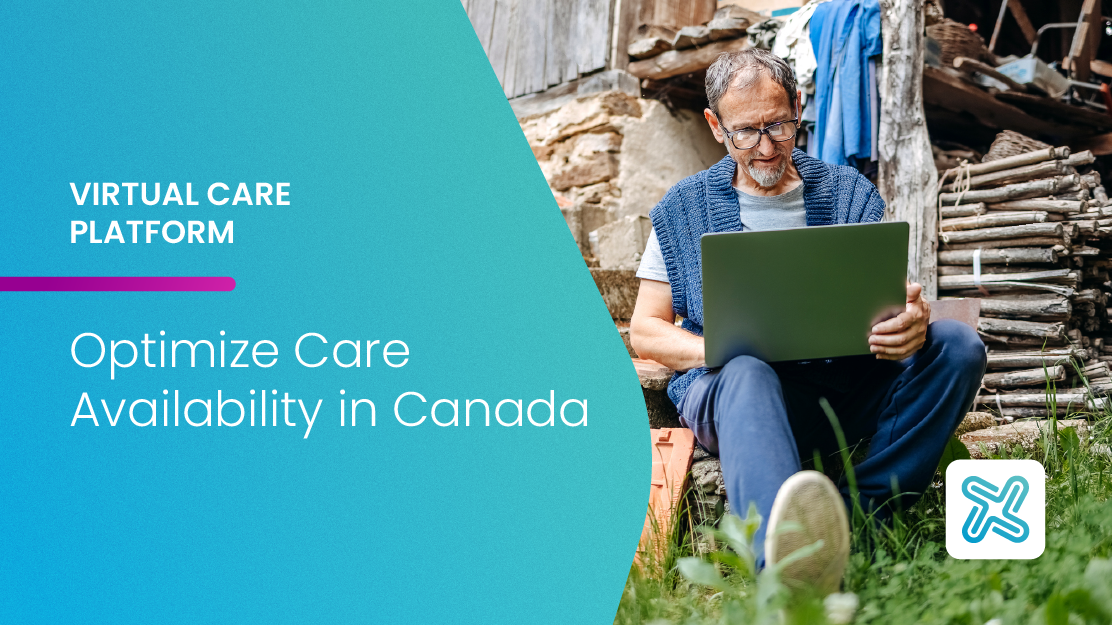Improving patient access remains a top priority for the Canadian government and healthcare organizations. Virtual care, digital health records, and patient portals are crucial tools in making care more accessible—especially for patients in rural and remote regions, where access to care is often limited.
Keep reading to discover how the Akinox Virtual Care Platform is improving access and availability in Canada and beyond.
What Impacts Care Access and Availability in Canada?
Social determinants of health (SDOH) and health inequalities directly affect care access and availability in Canada. A variety of personal, social, economic, and environmental factors influence individual and population health, impacting whether patients can access a provider in a reasonable time.
Geography also plays a significant role. In addition to patients impacted by the SDOH—such as those lacking transportation or unable to afford care—residents in remote regions face additional barriers, as the nearest physician or hospital is often far away. On average, rural Canadians travel over 35 km to see their doctor and 30 km to get to the nearest hospital, leading to lapses in care for those in need.
Compounding this issue is Canada’s family physician shortage, driven by overbearing expectations, limited resources, antiquated compensation models, and high operating costs. This shortage makes it increasingly difficult to meet the population’s healthcare demands.
3 Ways Virtual Care Improves Access and Availability
The Virtual Care Platform offer several benefits, helping to address these challenges and improve access:
1. A Better Patient Experience
Virtual care enhances the quality of care and creates a more streamlined patient experience. With features like appointment scheduling, access to lab results, direct communication with providers, and preventative care advice, patients can navigate the healthcare system more efficiently.
For vulnerable populations, virtual visits provide a safe and effective way to access care. Whether through parental authority, healthcare mandates, or patient consent, authorized third parties can ensure that those requiring assistance benefit from virtual care.
In 2024, the Virtual Care Platform introduced two strategic tools—the Service Offering Configurator and Workflow Builder. These innovations simplify the creation and deployment of care pathways, significantly reducing implementation time while ensuring flexibility. The Workflow Builder enables pathways to be configured with activities presented organically or sequentially, adapting to the unique needs of healthcare settings.
Additionally, pathways for chronic pain management and speech therapy were optimized, and tailored questionnaires were introduced for neurofibromatosis and the Quebec Mental Health Program (PQPTM). Pilot sites were launched to support enriched mental health pathways, and feedback tools were expanded to gather valuable insights.
2. Reduced Travel Time and Costs
Virtual care eliminates the need for travel and associated costs, saving patients an average of $105 per visit, according to a report by Canada Health Infoway. It additionally reduces barriers such as lost income due to time off work and childcare needs, making it a powerful tool for improving equitable access to care.With real-time communication tools and intelligent triage, the Virtual Care Platform minimize unnecessary visits to clinics, urgent care, or emergency rooms. Over 22,000 dermatology teleconsultations were completed in 2024 alone, and new offerings for chronic pain, neurology, and wound care further enhanced access and affordability.
3. Improved Resource Utilization
Healthcare systems are under immense strain, with long wait times and provider burnout being major challenges. Virtual care alleviates these issues by streamlining patient management and automating administrative tasks.The Virtual Care Platform includes features like API integrations for videoconferencing and scheduling, trajectory tools for telehealth visits, and optimized workflows for operational efficiency. Technical enhancements in 2024—such as real-time communication modules, an enhanced worklist for stakeholders, and improved care pathway navigation—have further streamlined clinical and administrative workflows, enabling providers to focus on delivering high-quality care.
Improving Care Access with Virtual Care
For over a decade, the Virtual Care Platform have played a critical role in improving access to care. From supporting remote regions in Québec to assisting the government during the COVID-19 pandemic, our platform continues to introduce new innovations and updated features each year, enabling accessible, collaborative, and patient-centric healthcare.
We are proud to contribute to making health more accessible for everyone. Let’s talk!

